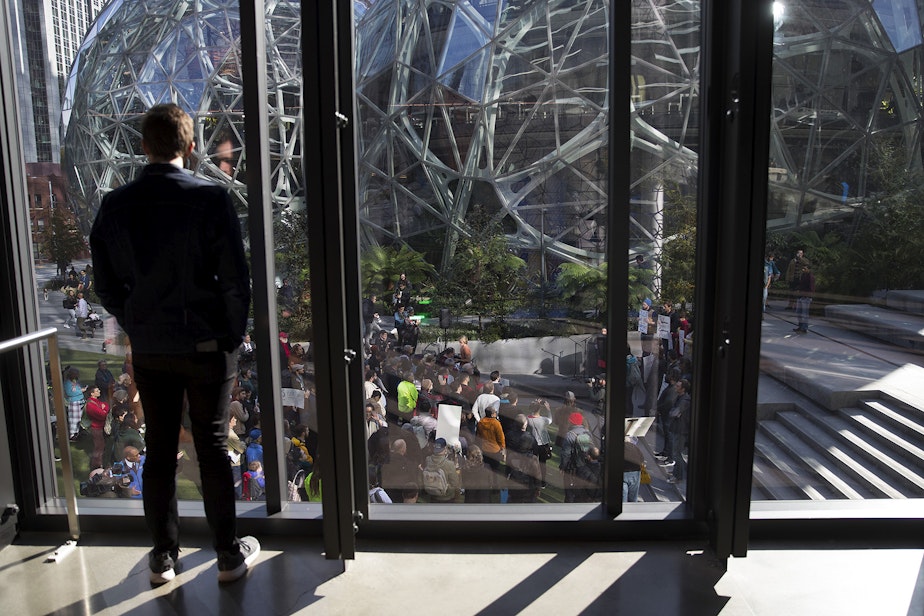How Amazon pulled Seattle from the recession and other tidbits from the last decade

Ten years ago this month, the Great Recession officially came to an end.
Across the country, the employment slump dragged on, but in the Puget Sound region, it was the start of something big.
KUOW business reporter Carolyn Adolph told Morning Edition host Angela King that December 2009 was the bottom of the trough.
What it was like back then.
Adolph: Even Microsoft had laid off workers. By that point, you could drive on I-5 at a good clip. There was a sense that jobs were being shredded out of the economy.
However, it wasn't quite so. Boeing kept hiring engineers, and at the offices of a little company called Amazon, the head of human resources was scooping up every Microsoft engineer he could get his hands on. Dave Niekerk said that hiring engineering talent at that time was like finding gold bars. He viewed it as a huge investment for Amazon.
Amazon played a big role in pulling Seattle out of the Great Recession.
Sponsored
The company said recently that it has created 53,000 jobs in the region. About 5,000 of them are in warehouses. That means the other 48,000 are well-paid jobs in South Lake Union. And on top of that, Amazon takes credit for contributing to the creation of 244,000 other jobs to the region's economy.
But the state economist, Steve Lurch, points out that in the decade since December 2009, King and Snohomish counties gained 377,000 jobs overall. So 80,000 jobs were created outside of Amazon's orbit.
But all this growth came at a huge cost. Many of the jobs that went away during the Great Recession didn't come back. A good deal of the new work isn't salaried. Gig work is often precarious and insecure.
Something that affects everybody is the cost of living. Rent is up 77 percent over the last decade. It's meant that people have to move and they struggle to save.
It also means that many people with good jobs can't afford to buy homes. And home prices have gone up a lot. The average Seattle home was $400,000 in December 2009, and now it's $735,000. The average on the east side, though, is $900,000.
Sponsored
What will the 2020s look like?
We do have a big problem, in the form of Boeing 737 Max. Several economists say that another Boeing bust wouldn't cripple our regional economy because there is so much momentum in job creation. There would be huge consequences however for people and communities where Boeing workers live, like Renton.
Beyond that, we can expect that more of the seeds of disruption sown in the last decade will take root in the 2020s.
And that will start immediately when the grand old department store Macy's closes downtown. Amazon has offices in that building and it is the one that will be saving Macy's Christmas star, all while doing one-day delivery and building satellites in Redmond.





